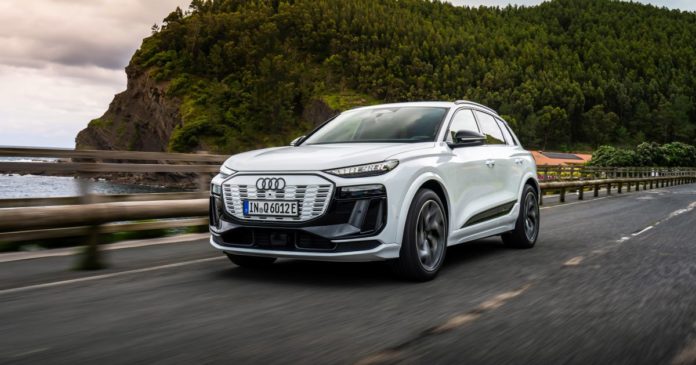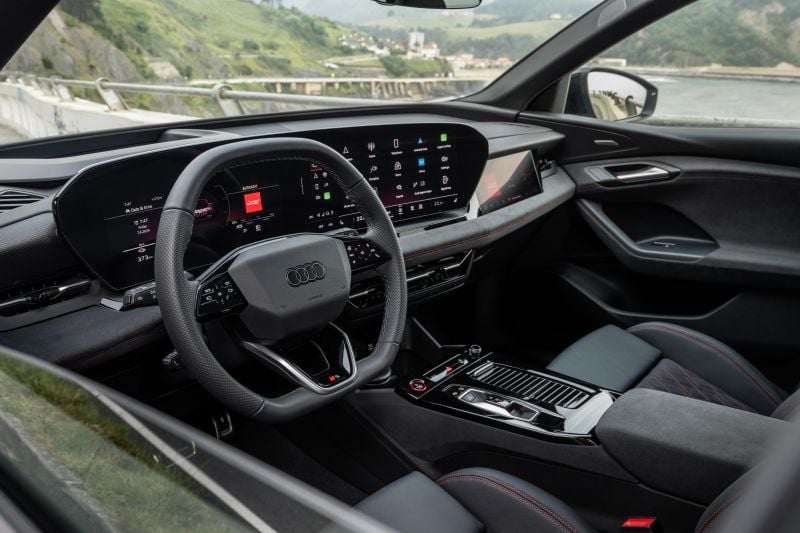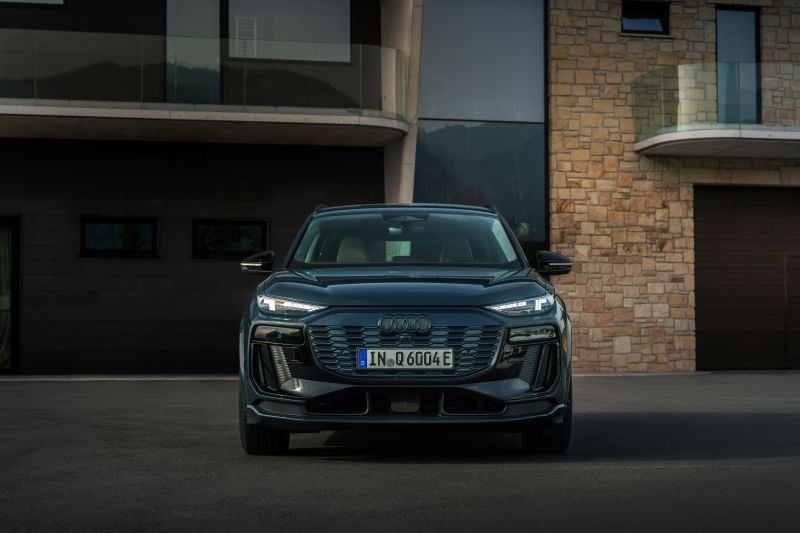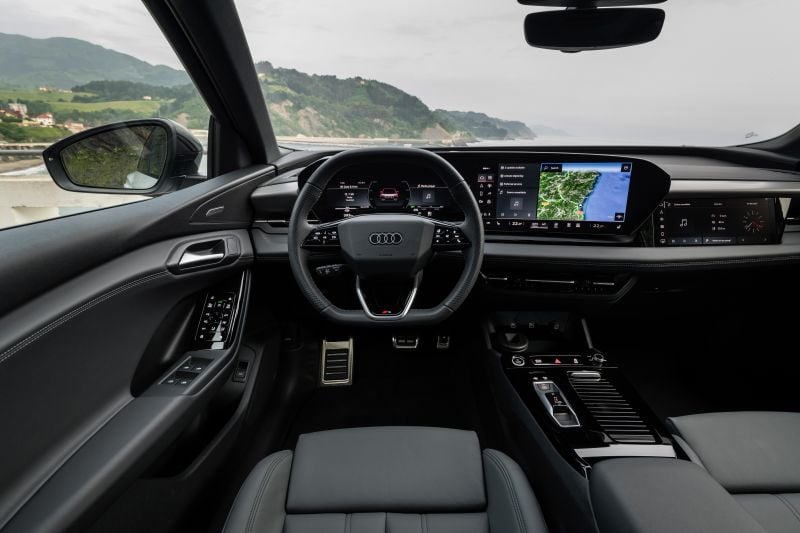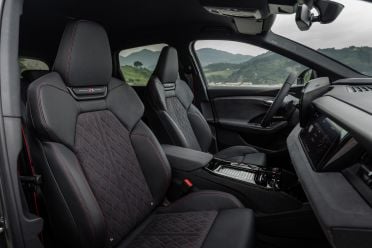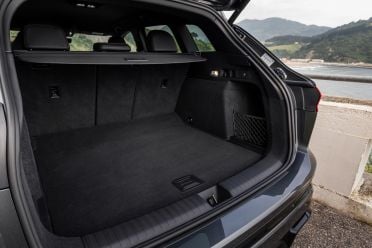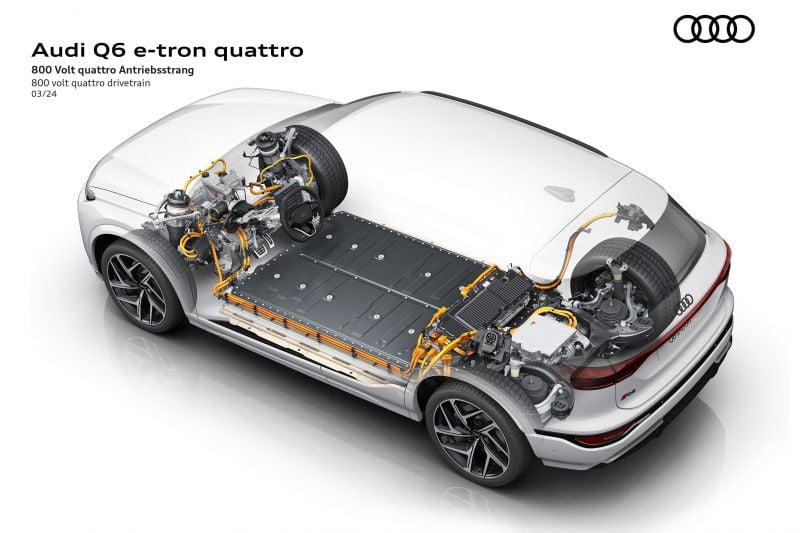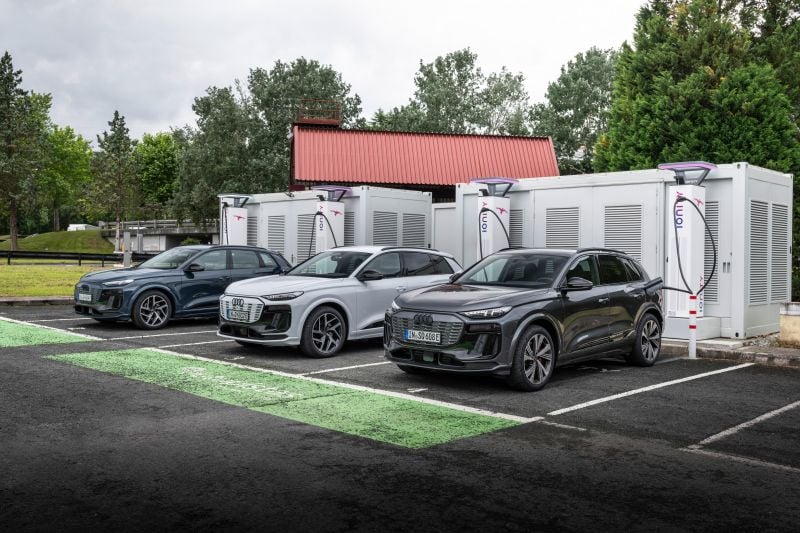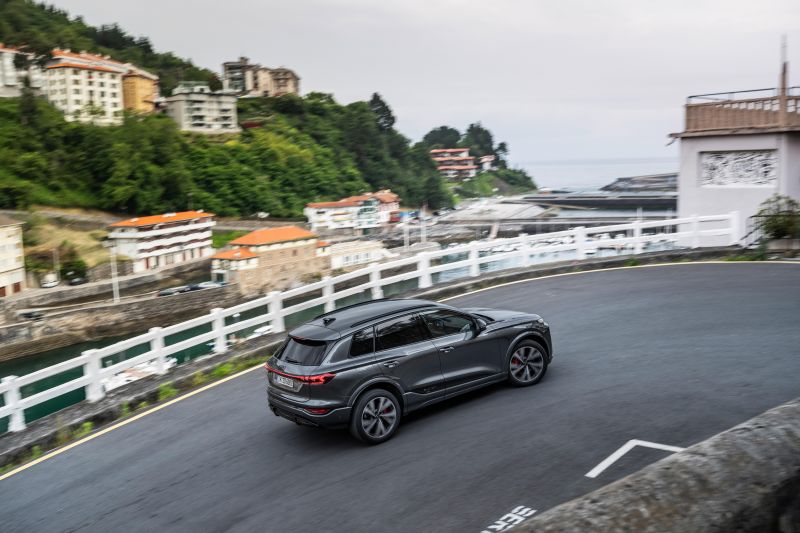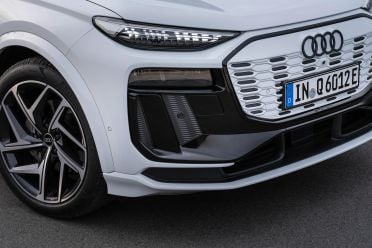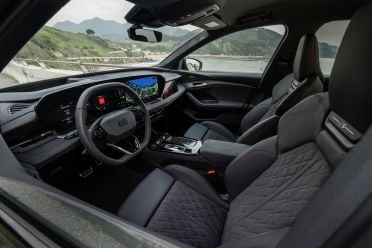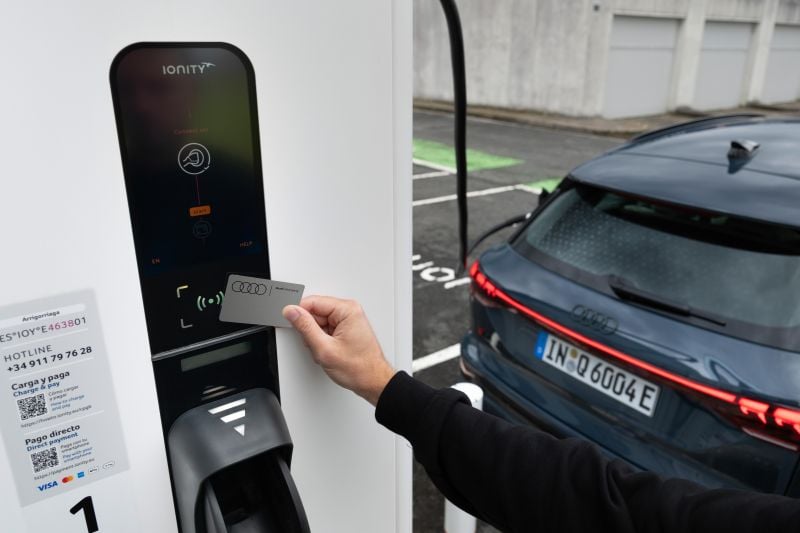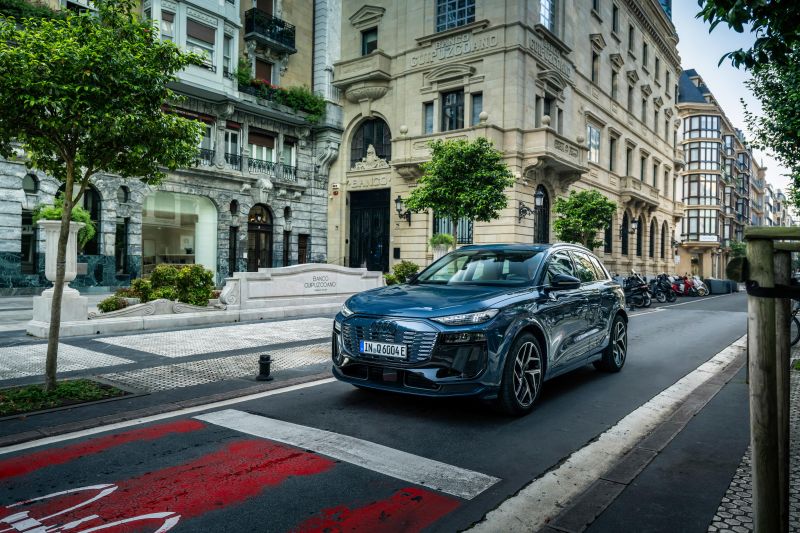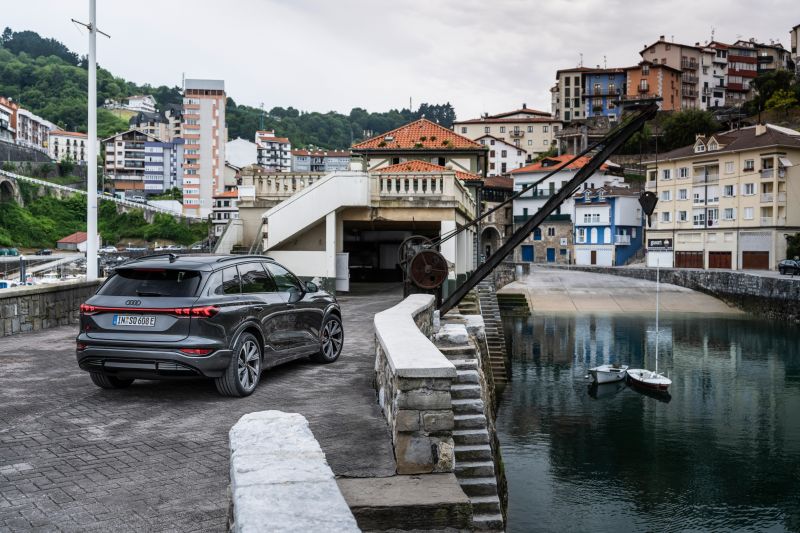It’s been a long time coming.
Had everything gone to plan, the Audi Q6 e-tron, scheduled to be the first model built on Volkswagen Group’s all-new Premium Platform Electric (PPE) electric vehicle hardware, should have been on Australian roads earlier this year.
But problems at Cariad, the software and technology company founded by Volkswagen Group in 2020, delayed the launch of this key Audi EV – and its PPE-based cousin, Porsche’s Macan Electric – by at least 12 months.
In simple terms, the hardware was ready, but the software wasn’t – and in the Q6 e-tron, the software is everything. The PPE platform is the first from Volkswagen Group with an end-to-end electronic architecture.
Dubbed E3 1.2, this architecture links together five powerful computers that control all vehicle functions, from infotainment to driving to backend connections that allow seamless data transfers between the car and remote computer networks. The Audi Q6 e-tron is, literally, a software defined vehicle.
As its name suggests, the Q6 e-tron plugs the gap between the luxury Q8 e-tron and the entry-level Q4 e-tron. With Volkswagen Group’s newest EV hardware and newest EV software, the Q6 e-tron is Audi’s electric SUV Version 3.0, and thus a measure of how well the company’s journey towards electrification is progressing.
The engineering and technology underpinning the Q6 e-tron will be instrumental in the company meeting its target of offering an EV in all its core model segments by 2027, say Audi execs. A Q6 Sportback e-tron is coming, and the first of a range of PPE-based A6 e-tron models will be unveiled within a few months.
The Q6 e-tron is 4771mm long, 1939mm wide, 1648mm high, and rolls on a 2899mm wheelbase. That makes it larger all round than the internal combustion engine Audi Q5, with an 80mm longer wheelbase.
In terms of the exterior design, there are few surprises – even the press kit describes the Q6 e-tron’s familiar collection of lines and angles and surfaces and graphics as “typical Audi SUV styling”. With a face dominated by a big grille there’s no obvious clue the Q6 e-tron is powered by electrons rather than hydrocarbons.
How does the Audi Q6 e-tron compare?
View a detailed breakdown of the Audi Q6 e-tron against similarly sized vehicles.

Audi
Q6 e-tron
How much does the Audi Q6 e-tron cost?
Audi is launching four different Q6 e-tron variants. The entry-level model is called, simply, the Q6 e-tron, and is a rear drive model with a single 230kW e-motor mounted at the rear axle, fed by an 83kWh battery.
Next is the Q6 e-tron Performance, which is also rear-drive, but has slightly more power and is equipped with a 100kWh battery that delivers more range. The Q6 e-tron quattro adds an e-motor to the front axle to deliver all-wheel drive. The SQ6 e-tron has an identical dual-motor powertrain, but a higher overall power output.
Audi Australia sources say no firm decisions have been made on which of the four models will be available locally. But the Australian lineup will almost certainly comprise the top three models, and European pricing suggests the Q6 e-tron Performance would retail for about $100,000, the Q6 e-tron quattro for about $124,000, and the SQ6 e-tron quattro for $156,000.
What is the Audi Q6 e-tron like on the inside?
As with the exterior styling, there’s much in the Q6 e-tron interior that’s instantly familiar in terms of form and detail and materials.
It looks pretty much exactly as you’d expect a current Audi interior to look. The SQ6 e-tron has all the usual sporty touches: hip hugging seats and dark materials adorned with red contrast stitching.
A large, curved free-standing panoramic screen, dubbed ‘the digital stage’ by Audi marketers, stretches almost two-thirds the way across the dash and hosts the latest iteration of Audi’s MMI user interface.
Immediately in front of the driver, behind the squared-off steering wheel that probably looks cool in the design studio but is annoying to use, is the 11.9-inch virtual cockpit display. Next to it is a 14.5-inch infotainment touch screen.
The infotainment system runs on Android Automotive OS, and offers Audi Connect services and the latest e-tron route planner, which optimises routes offered by the navigation system to maximise efficiency. The system can download third party apps for music, video, gaming, navigation, parking and charging, weather, and news services.
A third MMI display comprising a 10.9-inch mounted directly in front of the front seat passenger, is available as an option. The screen includes an active privacy mode that automatically blocks content from the driver’s view to avoid distraction.
Also available is a new augmented reality (AR) head-up display, and an 830-watt Bang & Olufsen sound system with 20 speakers, four of which are embedded in the front seat headrests.
The longer wheelbase delivers a rear seat that’s roomy for a mid-size SUV.
The boot floor is relatively high to accommodate the rear e-motor and its associated hardware, but the wide and flat load space has a capacity of 526 litres with the 40:20:40 split-fold seat back upright, increasing to 1529 litres with the rear seat folded flat.
The frunk offers a further 64 litres of load space.
What’s under the bonnet?
The PPE platform was jointly developed by Audi and Porsche, though as the Porsche Macan EV shows, each company was able to tweak elements of it to suit the personality of their brand.
The Q6 e-tron’s wheelbase, for example, is 6mm longer than that of the Macan EV. That’s because the Porsche has a different rear subframe and axle design to accommodate the more powerful Porsche-designed rear e-motor developed for the Turbo model, as well as Porsche’s rear wheel steering system.
The rear e-motor used in all the Q6 e-tron models is codenamed PSM 210-200. The PSM bit refers to the fact it is a permanently excited magnet design, while the 210-200 refers to the diameter and length, respectively, of the stator, in millimetres.
The motor is cooled by oil shared with the one-speed transmission and is 30 per cent more compact and 20 per cent lighter than previous Volkswagen Group e-motors.
Driving the front wheels of the Q6 e-tron quattro and the SQ6 e-tron is a 140kW, 275Nm asynchronous motor codenamed ASM 210-100.
The asynchronous design means the motor is not as powerful as a PSM unit of similar size, but because there no magnets in it – the magnetic field is generated by induction – it will spin more freely under light loads and doesn’t require expensive rare earths to make.
The e-motors are powered by battery pack that is mounted under the floor and protected from underside damage by a fibreglass composite skid plate.
In 100kWh form, the battery comprises 12 modules, each with 15 prismatic cells connected in series, and has a cooling plate in its housing. The battery’s modular construction allows it to be repaired – individual modules can be replaced if necessary – and even updated as newer, higher performance battery chemistries are developed.
The PPE platform’s 800V electrical architecture means the battery can accept charge rates of up to 270kW when connected to a fast charger, enabling its state of charge to be boosted from 10 to 80 per cent in 21 minutes. Audi claims that on a fast charger adding 255km of range takes just 10 minutes.
The single motor Q6 e-tron Performance, which weighs 2200kg, has 240kW and Audi claims it will accelerate from 0 to 100km/h in 6.6 seconds and reach a top speed of 210km/h. Maximum range, according to the WLTP test protocol, is 641km.
The 2350kg dual-motor Q6 e-tron quattro boasts a total system output of 285kW and will knock off the 0 to 100km/h sprint in 5.9 seconds. Top speed is the same as that of the e-tron Performance, but the extra weight and consumption of the front motor drops the WLTP range to 625km.
Software changes boost the total system output of the sportier SQ6 e-tron to 380kW, which drops the 0 to 100km/h acceleration time to just 4.3 seconds and increases the top speed to 230km/h.
But the laws of physics mean there’s no such thing as a free lunch: The quoted WLTP range for the SQ6 e-tron is 598km.
How does the Audi Q6 e-tron drive?
As mentioned, the Q6 e-tron is the Audi electric SUV, Version 3.0 – and that’s exactly what it feels like to drive.
From the first kilometre the Q6 e-tron feels noticeably more sophisticated than the cheaper, MEB-based Q4 e-tron, and more accomplished than the Q8 e-tron, which rolls on what is now the oldest EV platform in the Audi portfolio.
We sampled highly optioned versions of the Q6 e-tron quattro and SQ6 e-tron (Audi offered no rear-drive models for testing), both rolling on the adaptive air suspension and 21-inch wheels shod with 255/45 Pirelli P Zeros on the front wheels and 285/40 items at the rear.
Despite the relatively aggressive wheel/tyre combination, both versions immediately impressed in terms of their overall refinement. Ride quality is very good, especially in the default Balanced drive mode, or in Comfort mode. Selecting Dynamic mode induces slightly more vertical motion through the suspension, but there’s no increase in harshness or noise.
Noise levels are impressively low. The Q6 e-tron wafts along in luxury car silence, whether you’re cruising on the highway or crawling through city traffic. Not only is tyre and suspension noise very well suppressed, there’s also none of the high-pitched whine from the e-motors that can sometimes be heard in the Q4 e-tron.
Though the spec sheet says the SQ6 e-tron is quicker than the Q6 e-tron quattro, out on the road the performance difference between the two is hardly noticeable.
Sure, the more powerful SQ6 e-tron might be 1.6 seconds quicker to 100km/h from a standing start, but once you’ve overcome the inertia of 2350kg at a standstill and are rolling along the road, the instant-on torque from the e-motors makes the Q6 e-tron quattro feel almost as quick and responsive to inputs from the accelerator.
Speaking of inertia, the all-wheel drive Q6 e-tron disguises its mass very well through the twisty bits. That’s because the new multi-link front axle, combined with a steering rack that is bolted directly to the front subframe and subtle cross-axle torque vectoring by brake, endows the Audi SUV with surprisingly good turn in response on corner entry, while the larger, wider rear tyres make the most of the rearward torque bias on the way out.
Steering feel and feedback is good – despite that stupid steering wheel – and, thankfully, you easily can turn off the irritating lane keep assist function (and other finger-wagging nannies) by hitting a shortcut button on the centre console and toggling a switch on the touchscreen.
You can also dial back the stability control. One quick touch of the ESC button on the centre console allows enthusiastic drivers to dial in just a touch of oversteer on corner exit if they want, while the system keeps a watchful eye on things.
There wasn’t the room to try it out on the winding and narrow roads through Spain’s scenic Basque country, so we’ll take Audi’s word for it. However, the obvious rear-bias to the torque delivery makes it an entirely feasible scenario.
Brake feel is good, with the handoff between regenerative braking and mechanical braking smooth and seamless. Deceleration of up to 0.18g is done via regeneration at the rear e-motor alone, and then the front motor is used as well.
Above 0.30g the front mechanical brakes are actuated, and above 0.71g the rear mechanical brakes are also employed. For context, 95 per cent braking events in normal driving involve deceleration rates of 0.30g or less.
The Q6 e-tron’s computer controlled braking system will enable the e-motors to keep recuperating energy even when the ABS kicks in. The car can harvest up to 220kW this way.
Drivers can also adjust the level of lift-off regen via paddles on the steering wheel. In the highest recuperation level, with the transmission in B mode, the Q6 e-tron allows one-pedal driving.
At the lowest level, the Audi will coast, which allows it to flow nicely along a winding country road or on the freeway.
There is an automatic adaptive regen mode, but discerning drivers will want to switch this off, as the constant variances in how the Q6 e-tron responds when you lift off the accelerator are annoying.
What do you get?
Full specifications for the Australian market will be detailed in due course.
Q6 e-tron standard equipment – overseas:
- 18-inch alloy wheels
- 20-inch alloy wheels – SQ6 e-tron
- Audi e-tron route planner
- Customisable LED headlights
- OLED tail lights
- Audi Assistant voice activation
- Virtual cockpit digital instrumentation
- Power front seats
- Digital key
Options include:
- 19-inch and 21i-inch alloy wheels
- Bang & Olufsen Premium audio
- Adaptive Driving Assistant Plus
Is the Audi Q6 e-tron safe?
The Audi Q6 e-tron has of course yet to be submitted for ANCAP or Euro NCAP testing, but in terms of passive safety equipment it is state-of-the-art.
It’s available with a load of computer controlled active safety features, most notably Audi’s latest adaptive driving assistant system, which supports the driver when acceleration, braking and maintaining speed and well as lane keeping and when using cruise control.
Other available safety features include:
- Parking Assistant Plus – which will automatically park the Q6 e-tron
- Emergency Assistant – which can sense if the driver is not paying attention and if visual, acoustic and haptic warnings – intermittent brake jolts – don’t rouse them will bring the Q6 e-tron to a standstill
- Front Turn Assist – which is activated with the indicator and will automatically avoid a collision with an oncoming vehicle by applying the brakes at speeds up to 25km/h
- Swerve Assist – which between 30km/h and 150km/h will help a driver who has not reacted to a warning of an approaching obstacle by applying the brakes and a small amount of steering torque
- Emergency Brake Assist – which can also detect pedestrians at speeds up tom 85km/h
- Cross Traffic Assist – which works both front and rear.
- Exit Warning – which warns of cars or cyclists approaching from behind when opening the door.
How much does the Audi Q6 e-tron cost to run?
The Q6 e-tron will be covered by Audi’s five-year, unlimited-kilometre warranty.
A version of the 6/6/6 package currently offered to Audi Q8 e-tron customers may also be offered to Q6 e-tron buyers.
This comprises six-year unlimited subscription to the Chargefox public charger network, as well as six years of complementary scheduled servicing and six years of roadside assistance.
CarExpert’s Take on the Audi Q6 e-tron
The quiet and refined, smooth and punchy Q6 e-tron is the best electric SUV yet from Audi.
Despite the delays caused by problems at Volkswagen Group’s software division, it reveals a legacy mainstream carmaker applying expertise honed over decades of engineering and developing internal combustion engine vehicles to the task of building a better EV.
And what’s especially gratifying is that you don’t have to spend the most to get the best. The all-wheel drive 285kW Q6 e-tron quattro, likely to be the mid-price model of the lineup, looks to offer the nicest all-round blend of real world, real road performance and dynamics, and critically, range.
It’s the sweet spot of the Q6 e-tron lineup.
Click the images for the full gallery
MORE: Everything Audi Q6 e-tron

